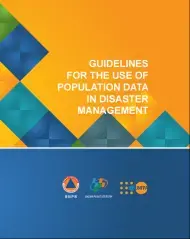Indonesia is a disaster prone country from a multitude of perspectives. While the country’s geographical location between two continents and two oceans provides great potential for economic development, it also makes it vulnerable to disasters. Geologically, Indonesia is located on three plates: the Eurasian Plate, the Indo-Australian Plate and the Pacific Plate. Coupled with a number of active volcanoes scattered across the land and seas that make Indonesia rich in mineral reserves, there are also very dynamic geological forces that can lead to potential disasters. Demographically, Indonesia’s large population with ethnic, cultural, and religious diversity – as well as disparities in economic and political conditions – are potential triggers of social conflict. Human behaviour during an emergency situation can create disturbances, ranging from small to national scale conflict. Political and ethnic unrest, armed conflicts with the military and social instability in Indonesia are common.
What we do
Guidelines for the Use of Population Data in Disaster Management

Publisher
Number of pages
96
Author
UNFPA
Publications
Guidelines for the Use of Population Data in Disaster Management
Publication date
18 April 2015

